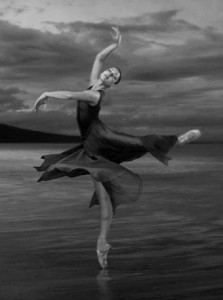 Although we live in an ever-changing world, do we cross the line when something that has been traditionally studied as a fine art — which comes from the soul — becomes a repetitive study of technique only? Increasingly, ballet is being seen as a competition for the best technique, rather than the fine art of “artistry”. Reprinted for this month’s blog, comes an article from The New Republic titled: Ballet Is In Crisis Because It’s Turning Into a Sport — a thought provoking article discussing how ballet competitions are playing a role in this. I invite you to read and comment: “The International Olympic Committee recently voted to restore wrestling to the Olympic Games in 2016. One activity that’s never been put before the committee: ballet. Despite its physical similarities to gymnastics, ice-skating and ballroom dance, most ballet dancers would bristle at the suggestion that it’s a sport—and yet, many ballet teachers and directors have embraced Olympic-style competitions in which aspiring dancers compete for gold, silver and bronze medals, scholarships, contracts and even cash. “The curious thing about dance now, and ballet in particular,” Jennifer Homans recently argued in The New Republic, “is that it has taken the form but left the feeling. Artists today seem more attached to form than perhaps ever before—wedded to concept, abstraction, gymnastic moves and external appearance.” This dearth of feeling might have something to do with the growth of competition culture, in which artistry is scored and treated as just another variable. For instance, at the Youth America Grand Prix, the biggest annual student competition, artistry and technique are equally weighted, with each evaluated on a 100-point scale. And some students at many of the world’s top ballet schools, like the Jacqueline Kennedy Onassis School at American Ballet Theatre and London’s Royal Ballet School, are recruited through competitions like the Youth America Grand Prix (YAGP), the New York International Ballet Competition, and the Prix de Lausanne. While ballet companies worldwide have been struggling to attract audiences and donors, competitions have been growing ever bigger and more commercial. The last few decades have seen increasing participation and corporate sponsorship, as well as the founding of new competitions like YAGP in 1999 and the World Ballet Competition (WBC) in 2007. At YAGP, the biggest student competition, over 5,000 participants— some as young as nine—vie for scholarships, cash, and even modeling contracts. YAGP was further popularized by the well-received 2011 documentary First Position, which follows six contestants as they make their way from the regional preliminaries to the finals in New York. Needless to say, some traditionalists object. “I don’t like the idea of that kind of competition,” said Carol Sumner, who danced as a soloist at New York City Ballet under George Balanchine. “To be a great dancer doesn’t mean to have a great technique. What you have to be is interesting. Mr. B [Balanchine] said he chose dancers that are interesting to look at, he chose dancers that he wanted to see everyday—not necessarily the strongest ones.” But being interesting to look at won’t get you far when you’re being scored on the height of your extensions and the number of pirouettes you can turn.
Although we live in an ever-changing world, do we cross the line when something that has been traditionally studied as a fine art — which comes from the soul — becomes a repetitive study of technique only? Increasingly, ballet is being seen as a competition for the best technique, rather than the fine art of “artistry”. Reprinted for this month’s blog, comes an article from The New Republic titled: Ballet Is In Crisis Because It’s Turning Into a Sport — a thought provoking article discussing how ballet competitions are playing a role in this. I invite you to read and comment: “The International Olympic Committee recently voted to restore wrestling to the Olympic Games in 2016. One activity that’s never been put before the committee: ballet. Despite its physical similarities to gymnastics, ice-skating and ballroom dance, most ballet dancers would bristle at the suggestion that it’s a sport—and yet, many ballet teachers and directors have embraced Olympic-style competitions in which aspiring dancers compete for gold, silver and bronze medals, scholarships, contracts and even cash. “The curious thing about dance now, and ballet in particular,” Jennifer Homans recently argued in The New Republic, “is that it has taken the form but left the feeling. Artists today seem more attached to form than perhaps ever before—wedded to concept, abstraction, gymnastic moves and external appearance.” This dearth of feeling might have something to do with the growth of competition culture, in which artistry is scored and treated as just another variable. For instance, at the Youth America Grand Prix, the biggest annual student competition, artistry and technique are equally weighted, with each evaluated on a 100-point scale. And some students at many of the world’s top ballet schools, like the Jacqueline Kennedy Onassis School at American Ballet Theatre and London’s Royal Ballet School, are recruited through competitions like the Youth America Grand Prix (YAGP), the New York International Ballet Competition, and the Prix de Lausanne. While ballet companies worldwide have been struggling to attract audiences and donors, competitions have been growing ever bigger and more commercial. The last few decades have seen increasing participation and corporate sponsorship, as well as the founding of new competitions like YAGP in 1999 and the World Ballet Competition (WBC) in 2007. At YAGP, the biggest student competition, over 5,000 participants— some as young as nine—vie for scholarships, cash, and even modeling contracts. YAGP was further popularized by the well-received 2011 documentary First Position, which follows six contestants as they make their way from the regional preliminaries to the finals in New York. Needless to say, some traditionalists object. “I don’t like the idea of that kind of competition,” said Carol Sumner, who danced as a soloist at New York City Ballet under George Balanchine. “To be a great dancer doesn’t mean to have a great technique. What you have to be is interesting. Mr. B [Balanchine] said he chose dancers that are interesting to look at, he chose dancers that he wanted to see everyday—not necessarily the strongest ones.” But being interesting to look at won’t get you far when you’re being scored on the height of your extensions and the number of pirouettes you can turn.
(RELATED: America’s Orchestras Are in Crisis, Too)
Competitions may be especially detrimental for young dancers, who haven’t had a chance to develop a sense of artistry. “Kids sitting in the audience, they get wowed when they see a kid do four or five pirouettes or see their leg go over their head,” said Susan Jaffe, Dean of Dance at University of North Carolina School of the Arts and former Ballet Mistress at American Ballet Theatre. “This is pure physical talent and that, of course, is not where the art of ballet lives.” The rise in student ballet competitions might have something to do with the growing competitiveness of all children’s activities, from chess tournaments to spelling bees. Little League baseball—whose “world series” is now broadcast on ESPN—was founded in 1939; North America’s first international ballet competition was organized 25 years later. In The Atlantic last month, Harvard sociologist Hilary Levey Friedman relates the rise of competitive children’s sports to the frenzy surrounding college admissions as students scramble to fill out the “awards” section on their college applications. TV shows like Dancing with the Stars and So You Think You Can Dance, which have both been running since 2005, might also have played a role in normalizing dance contests. Homans and other critics and dancers lament that ballet is no longer the crowd-pleasing, exciting spectacle it was a century ago. “It is worth recalling that when Sleeping Beauty premiered in Russia in 1890, it was like watching Technicolor for the first time: controversial, visually overwhelming, a new way of seeing,” she writes. This is hard to imagine today; contemporary audiences consist disproportionately of dancers and ex-dancers. “Dancers in competitions are just pleasing each other, pleasing their peers, pleasing the judges,” said Sumner. “It’s kind of incestuous.” This is not to say that ballet is not inherently competitive. Dancers at every level compete constantly—for spots in summer programs and schools, for attention from teachers and directors, for roles and promotions. But there’s a difference between competitive rivalry and formalized competition. Homans writes that ballet today suffers from “too much athleticism” and a “fear of feeling.” What could be more likely to exacerbate the emphasis on technique than training dancers to please a panel of trained judges rather than a general audience?”
